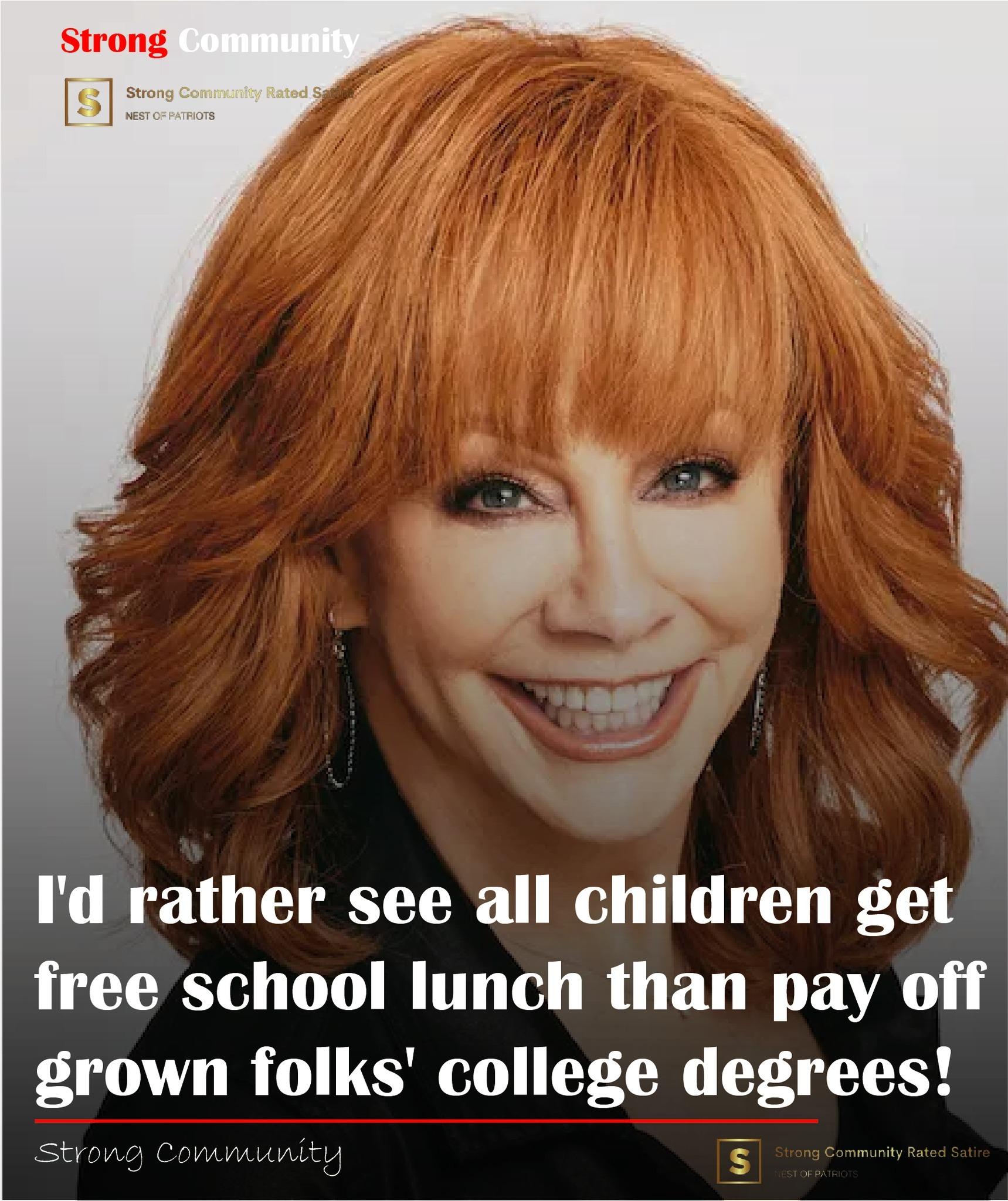I’d Rather See All Children Get Free School Lunch Than Pay Off Grown Folks’ College Degrees!
The debate over how to allocate public funds often pits competing priorities against each other, but few issues highlight this tension as starkly as the choice between providing free school lunches for children and forgiving student loan debt for adults. While both causes have merit, ensuring every child has access to nutritious meals at school is a more urgent and equitable investment in the future than wiping out college debt for grown adults who made informed financial decisions.

The Crisis of Child Hunger
Hunger is a daily reality for millions of American children. According to the USDA, over 13 million kids live in food-insecure households, meaning they don’t always have reliable access to enough food. School lunches are often their only consistent source of nutrition, yet many families struggle to afford even subsidized meal programs. The result? Kids go hungry, their ability to learn suffers, and cycles of poverty persist.
Free school lunch programs, like those piloted in states such as California and Minnesota, have shown transformative results. Students in these programs demonstrate better academic performance, higher attendance rates, and lower rates of obesity and behavioral issues. Feeding kids isn’t just a moral imperative—it’s a practical investment in healthier, more successful futures.
The Student Loan Debate
On the other side, student loan forgiveness has become a rallying cry for progressives arguing that college debt burdens millions of Americans, stifling economic growth and delaying milestones like homeownership. As of 2025, total U.S. student debt exceeds $1.7 trillion, with the average borrower owing around $37,000. Forgiveness plans, like those proposed by the Biden administration, aim to ease this burden, particularly for low- and middle-income borrowers.
However, critics argue that loan forgiveness disproportionately benefits higher earners—doctors, lawyers, and other professionals—who can eventually pay off their debts. It also sidesteps the root issue of skyrocketing tuition costs, offering a one-time bailout rather than systemic reform. Most critically, it prioritizes adults who chose to borrow over children who have no control over their circumstances.
Equity and Urgency
The contrast in urgency is stark. Children don’t choose to be born into poverty or to attend underfunded schools where meals aren’t guaranteed. Hunger affects their development now—physically, mentally, and emotionally—with consequences that ripple across their lives. Adults with student loans, while burdened, have agency: they can negotiate repayment plans, seek higher-paying jobs, or refinance. Kids can’t negotiate their way out of an empty stomach.
Moreover, free school lunches are universally beneficial, leveling the playing field for all students regardless of income. Student loan forgiveness, by contrast, risks rewarding those who already have access to higher education while doing little for those who never had the chance to attend college in the first place.
The Cost Question
Opponents of free school lunches often cite costs, but the numbers tell a different story. The National School Lunch Program costs about $14 billion annually, a fraction of the estimated $400 billion price tag for one-time student loan forgiveness proposals. Expanding free lunches to all students would likely cost less than $30 billion per year—a drop in the bucket compared to the federal budget and a far more immediate return on investment.
Voices from the Ground
On platforms like X, parents and educators have been vocal: “Why are we debating debt relief for adults when kids are starving in classrooms?” one user posted. Another wrote, “College loans were a choice; hunger isn’t.” These sentiments reflect a growing frustration with policies that seem to prioritize the loudest voices over the most vulnerable.
A Call for Priorities
Investing in free school lunches isn’t just about feeding kids today; it’s about breaking cycles of poverty, improving public health, and building a stronger workforce for tomorrow. Student loan forgiveness, while appealing to a vocal demographic, addresses a less urgent problem and risks entrenching inequities by favoring those already on a path to upward mobility.
The choice is clear: every child deserves a full belly and a fair shot at success. Let’s focus on feeding the future before bailing out the past.






